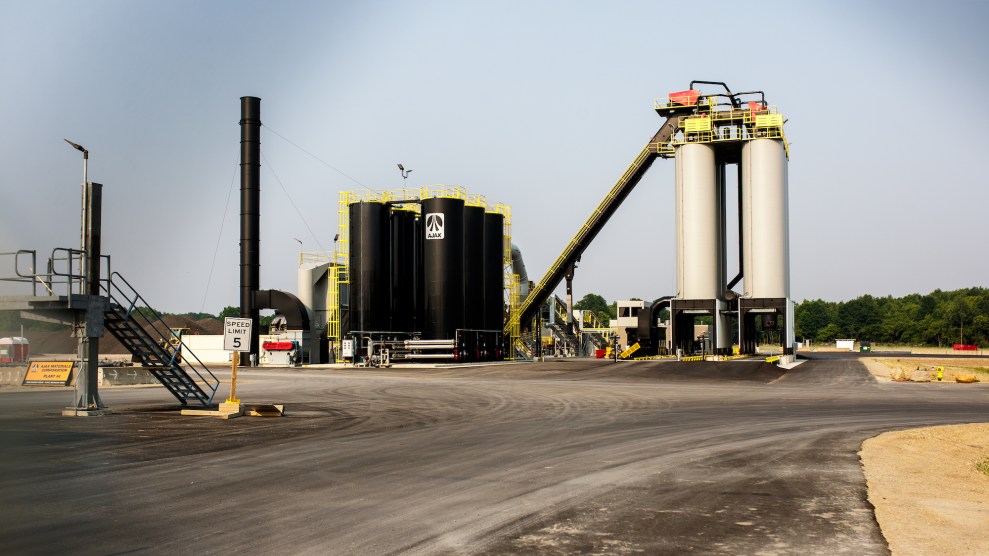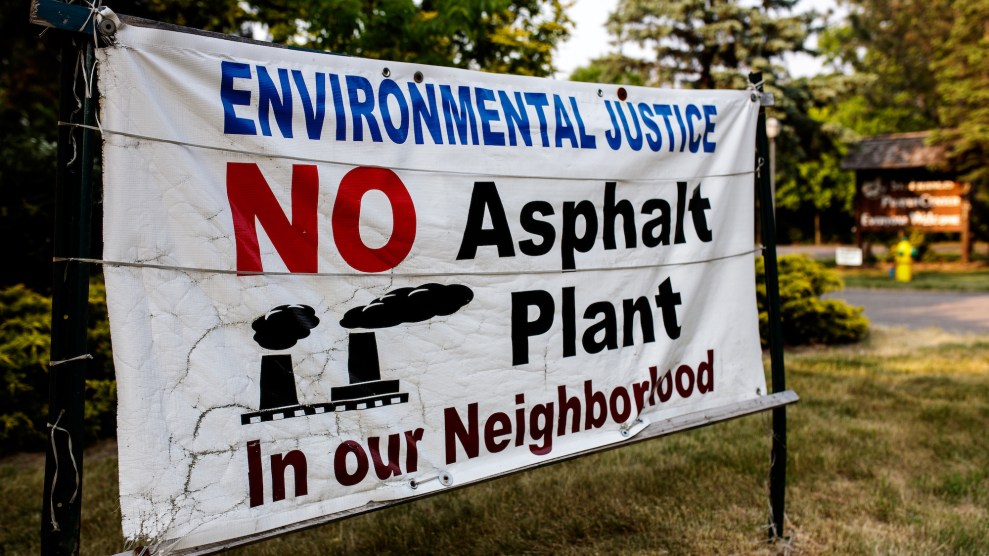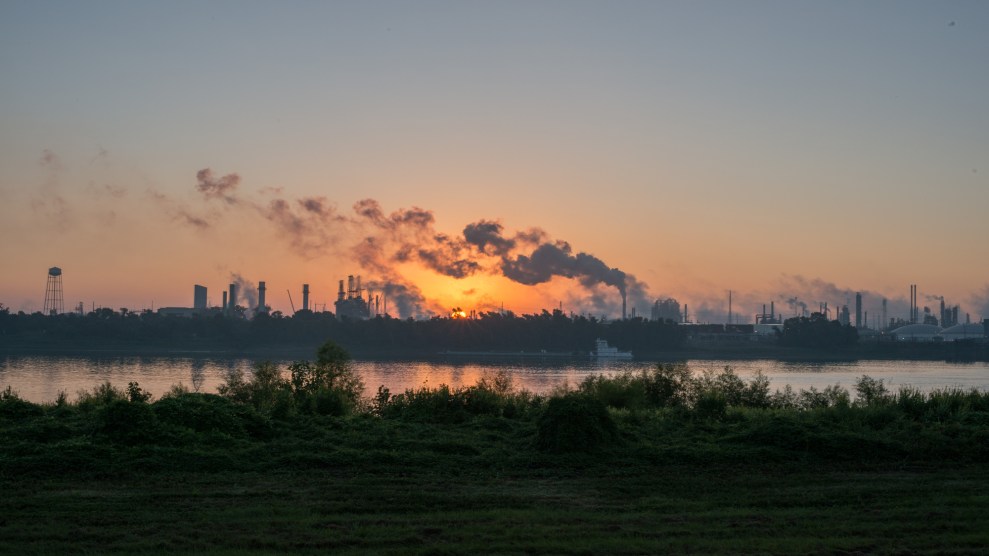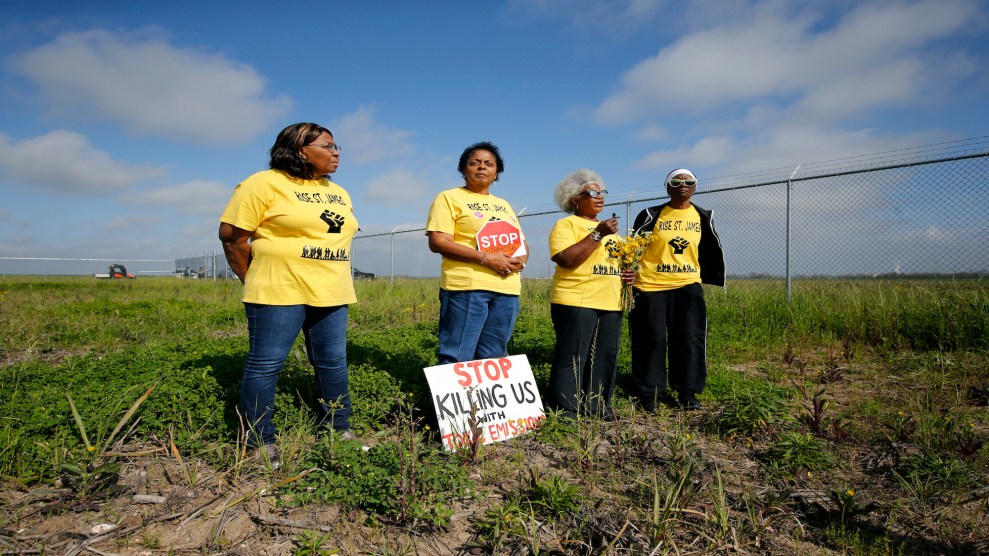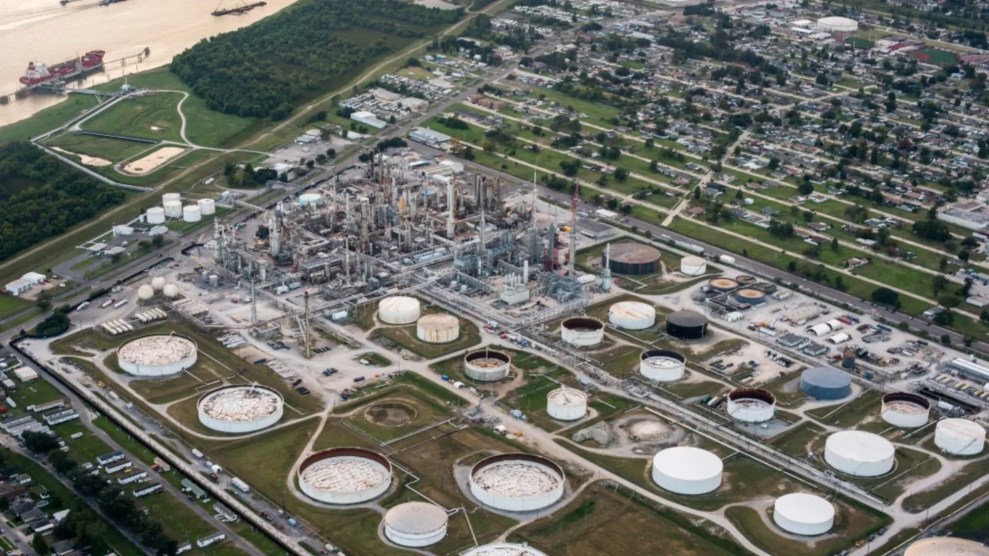
Giles Clarke/Getty/Grist
This story was originally published by Grist and is reproduced here as part of the Climate Desk collaboration.
The 85-mile stretch of land along the lower Mississippi River in Louisiana is among the most studied industrial corridors in the country. Over the past several decades, advocates, scholars, and journalists have published numerous reports detailing the dangerous concentrations of toxic chemicals in the environment and their effects on the health of the region’s residents, many of whom are Black and low-income. It’s why the area is known around the world as “Cancer Alley.”
A report published on Thursday by Human Rights Watch sheds new light on the experiences of residents living near the region’s sprawling petrochemical complexes, and includes details of a first-of-its-kind analysis that found higher rates of poor birth outcomes among women living in south Louisiana. In the areas with the worst pollution, for instance, the report found that more than a quarter of babies are born with low birth weights, more than double the state average.
The researchers put much of the blame on state regulators, who have repeatedly permitted plants in areas where the air is already choked with pollution and have failed to enforce federal standards. To that end, Human Rights Watch recommended that the Environmental Protection Agency initiate an investigation into whether the Louisiana Department of Environmental Quality should be the agency administering the Clean Air Act in the state.
Human Rights Watch’s lead researcher on the report, Antonia Juhasz, told Grist that she hopes her team’s work will help to spur change at the state and federal levels. Headquartered in New York City, the organization is best known for its work documenting the cases of jailed activists, dictatorships, and humanitarian conditions in crisis zones around the world, not for its North America-based research.
“We were hoping that we could provide additional research by applying Human Rights Watch’s unique model of going in and documenting harm in a very careful, interview-by-interview process that has been applied all around the world to human rights,” Juhasz said.
The study comes as the fossil fuel industry ramps up its build-out throughout the region, with at least 19 new petrochemical projects in the works, and as southern Louisiana comes under greater scrutiny. In 2022, United Nations Special Rapporteur on Human Rights and the Environment David Boyd identified the area known as Cancer Alley as one of the 50 most polluted places on Earth. Boyd said these “sacrifice zones” represent “a stain upon the collective conscience of humanity.”
Much of the new report is descriptive, painting a picture of giant industrial facilities belching out huge plumes of black smoke that drift over the homes, schools, and outdoor spaces where people live, work, and play. Juhasz interviewed 37 residents living in the nine parishes between Baton Rouge and New Orleans and found that severe respiratory conditions such as bronchitis and childhood asthma are common.
“Residents said these ailments added stress to already at-risk pregnancies, resulted in children being rushed to emergency rooms and kept inside to avoid polluted air, missed days of work and school, sleepless nights due to wracking coughs, and the deaths of family members and friends,” the report reads.
It also details the results of a yet-to-be-published study finding rates of low birth weight (less than 5.5 pounds) soared as high as 27 percent in census tracts with high levels of air pollution. By contrast, the national rate is 8.5 percent. (The analysis is currently under peer review for the publication Environmental Research: Health.)
To complement this research, Juhasz interviewed people such as Ashley Gaignard, 46, a resident of Donaldsonville in Ascension Parish, which has the highest reported amount of toxic air pollution in the region, with more than 22 plants operating within its borders. All three of Gaignard’s children had low birth weights and two were premature. Her son Jason, 23, was born with an undeveloped lung. The condition contributed to severe lifelong asthma that has led to frequent emergency room visits and nebulizer treatments.
Juhasz said this research is important because birth outcomes are not often considered in studies of exposure to toxic air pollution. “Most women are unaware of this risk,” she said. “Most medical professionals are unaware of the risk. And so that information is not getting shared or acted upon.”
The report lays out a list of recommendations to various state and federal agencies to improve conditions in Cancer Alley. In particular, Juhasz and her team suggested that the EPA initiate an investigation into whether it should withdraw the Louisiana Department of Environmental Quality’s authority to administer the Clean Air Act in the state. In addition to weak enforcement protocols and a permitting process that repeatedly allows more industrial development in Black communities, the report notes, the state agency has adamantly denied claims that residents living near the region’s hulking chemical plants are getting sick from the pollution.
A former EPA staffer and air pollution expert, Scott Throwe, said he doubts whether such an investigation would be fruitful, and he could not think of a time in his 30 years at the agency when one was conducted. But he agreed with the report’s argument that the federal government’s lack of action in Cancer Alley has been disappointing. At the start of his term in 2021, EPA Administrator Michael Regan promised to make the disproportionate pollution in Black neighborhoods across the country a priority for cleanup, and specifically visited Cancer Alley residents on a “toxic tour” of the South. More than three years later, Throwe said, not much has changed.
“I was happy to see Mr. Reagan’s initial efforts and intentions, but unfortunately, I really think the follow-through has just been anemic,” he said. “I just don’t see the efforts to hold the states accountable.”
